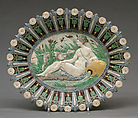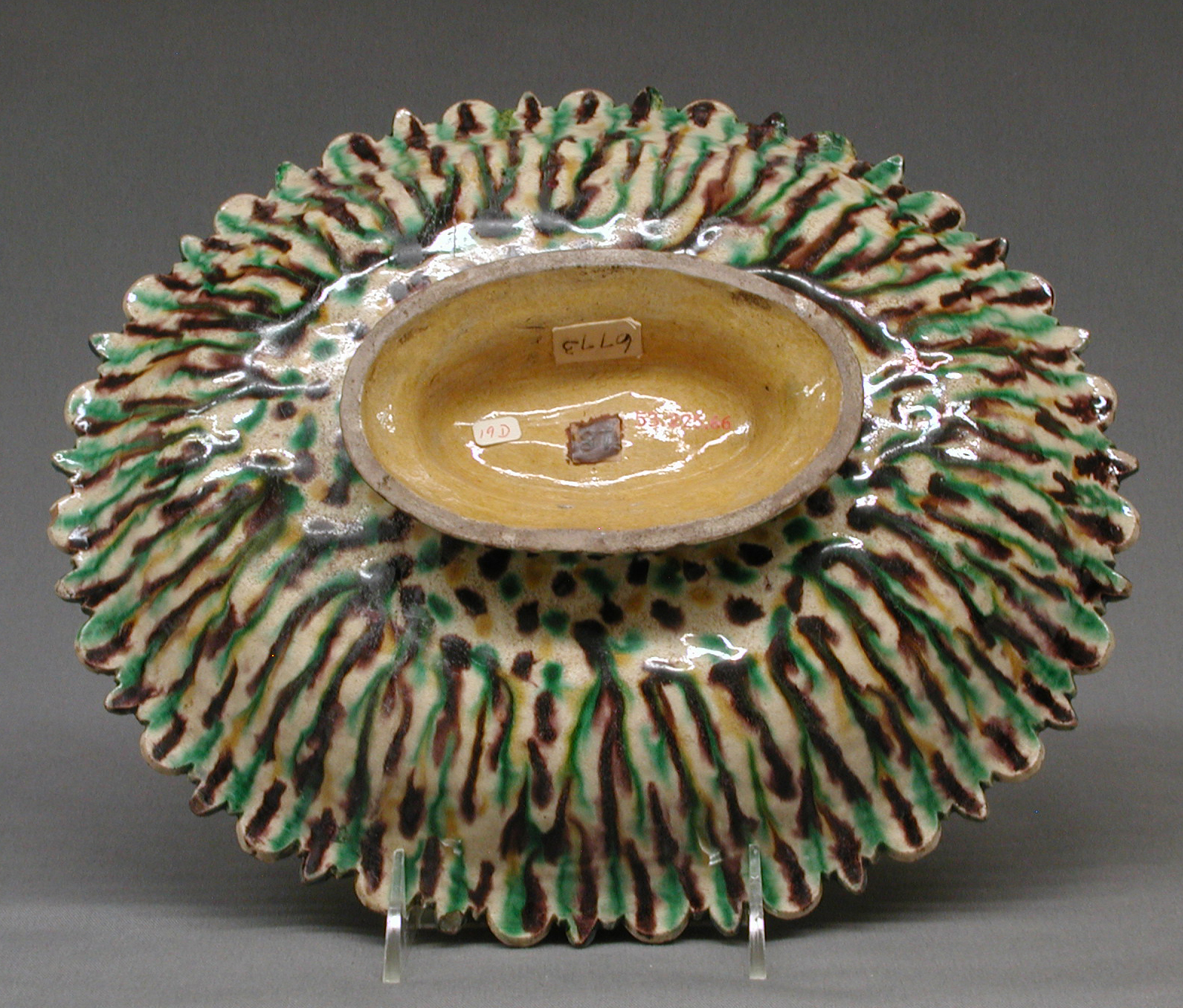Dish with Diana, the Nymph of Fontainebleau
Not on view
The scene on this plate is based on a print begun by the skilled Parisian engraver Pierre Milan and finished several years later by an assistant to Milan, René Boyvin. The original composition is after a fresco by Rosso Fiorentino ("Il Rosso"). The subject refers to the origin of the name of Fontainebleau: a thirsty hunting dog named Bleau separated from its master and found in the forest a clear, pure spring; his master, "one of our kings," named the spring after him "la Fontaine de Bleau."
The image of Diana, Nymph of Fontainbleau, enjoyed great popularity: the Museum has two other versions of this composition, notably a copy of the engraving in the Department of Drawings and Prints (32.105), and an oil on wood painting in the Department of European Paintings (42.105.12).
Due to rights restrictions, this image cannot be enlarged, viewed at full screen, or downloaded.
This artwork is meant to be viewed from right to left. Scroll left to view more.



